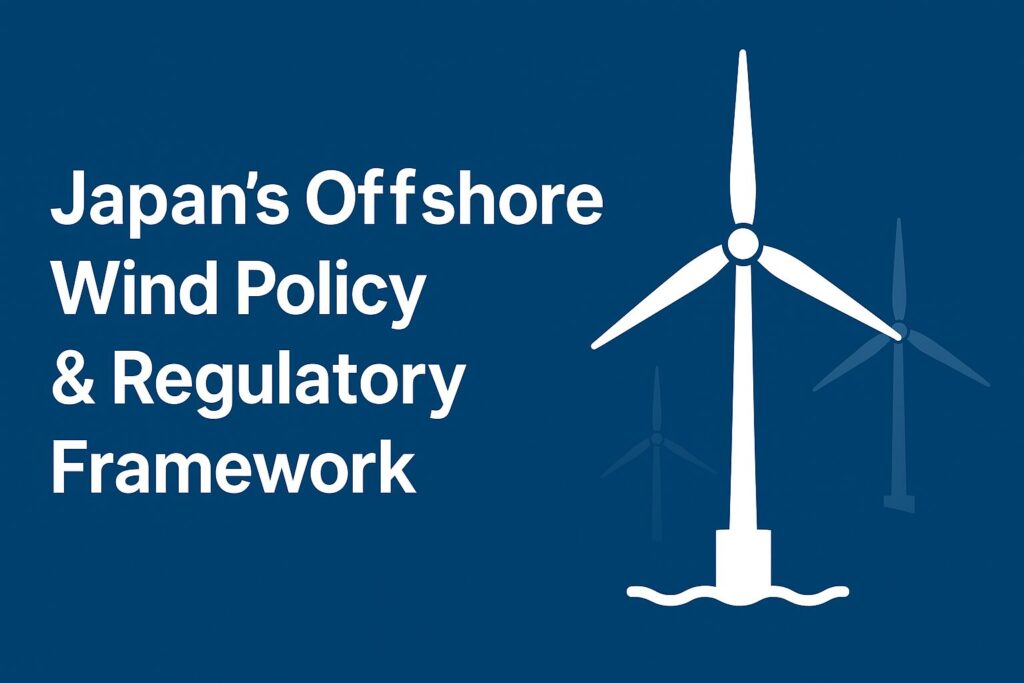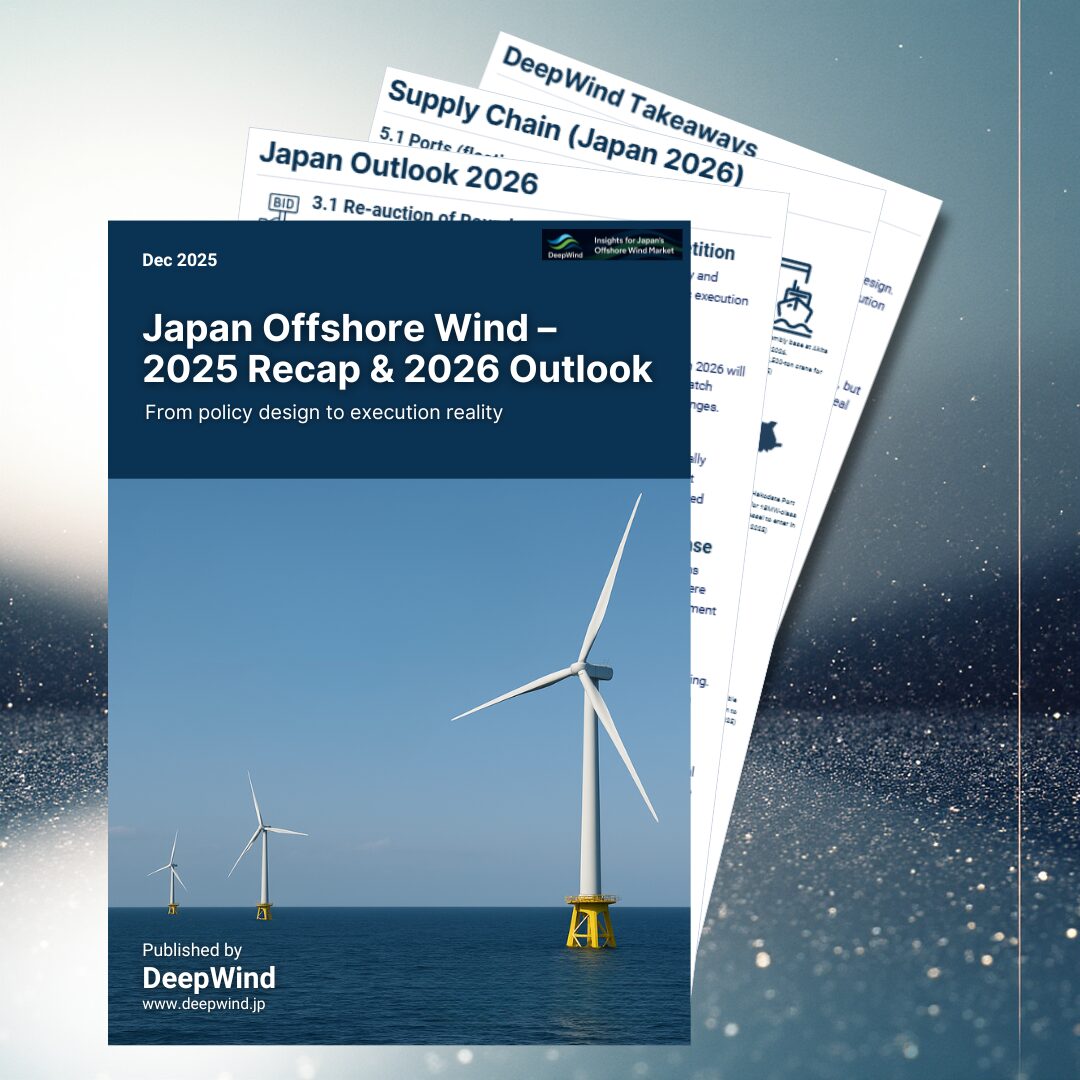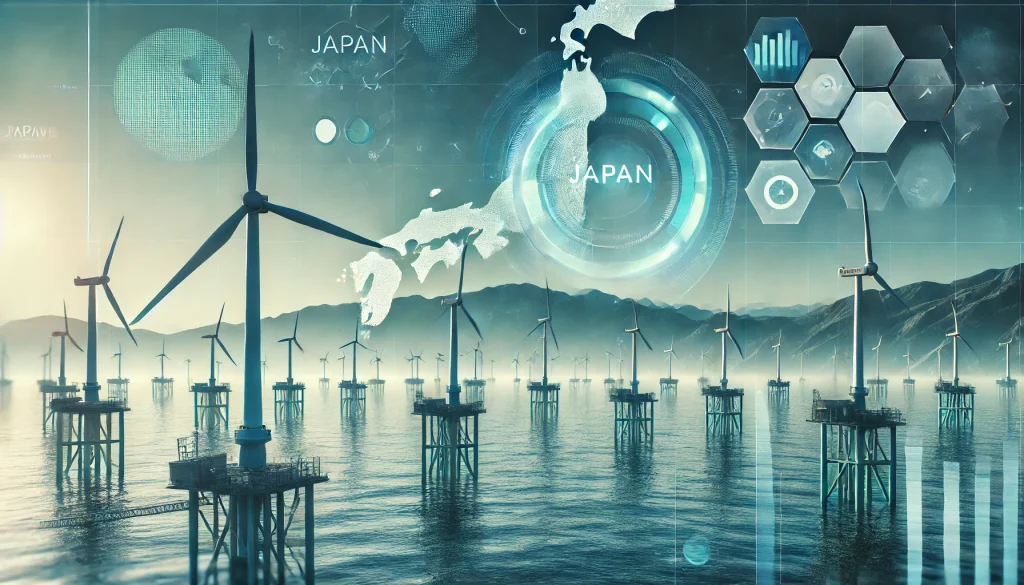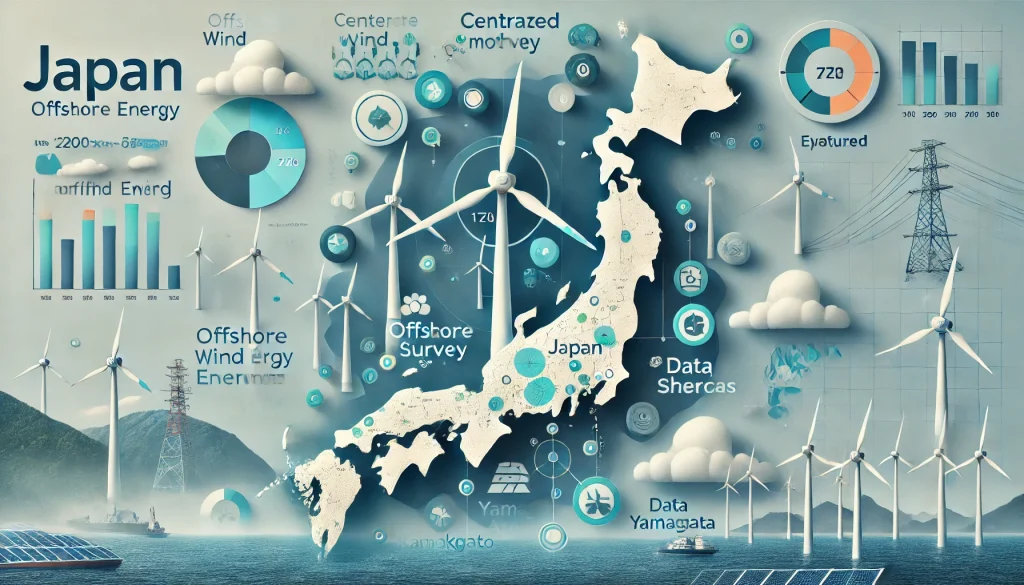Introduction: Japan’s Ambitious Targets and Policy Imperatives
Japan has set ambitious offshore wind capacity targets of 10 GW by 2030 and 30–45 GW by 2040 as part of its broader carbon neutrality goal by 2050. Achieving these goals requires a robust and evolving policy framework covering legal foundations, economic incentives, project selection procedures, and certification systems.
🔗 Japan’s Offshore Wind Energy Goals: Achieving 10 GW by 2030 and 45 GW by 2040

1. Strategic Energy Policy and Long-Term Vision
Offshore wind is positioned as a key pillar in Japan’s long-term energy strategy, including the Strategic Energy Plan and the Global Warming Countermeasures Plan. These documents serve as compasses guiding Japan’s energy mix and decarbonization roadmap.
🔗 What Is Japan’s Strategic Energy Plan? Understanding the Country’s Long-Term Energy Compass

2. Centralized Approach: Streamlined Policy Implementation
Japan has adopted a centralized approach to streamline the selection and implementation of offshore wind projects. Under this system, the government identifies promotion zones and conducts public tenders, increasing transparency, reducing risk, and improving investor confidence.
🔗 Japan’s Centralized Approach: Streamlining Offshore Wind Power Development
3. Legal Framework and the Promotion Zone System
The Marine Renewable Energy Act, often referred to as the Promotion Zone Law, forms the legal foundation for offshore wind development. The act allows the designation of sea areas for exclusive use through public bidding, coordinated by METI and MLIT.
🔗 Japan offshore wind policy backed by the Marine Renewable Energy Act
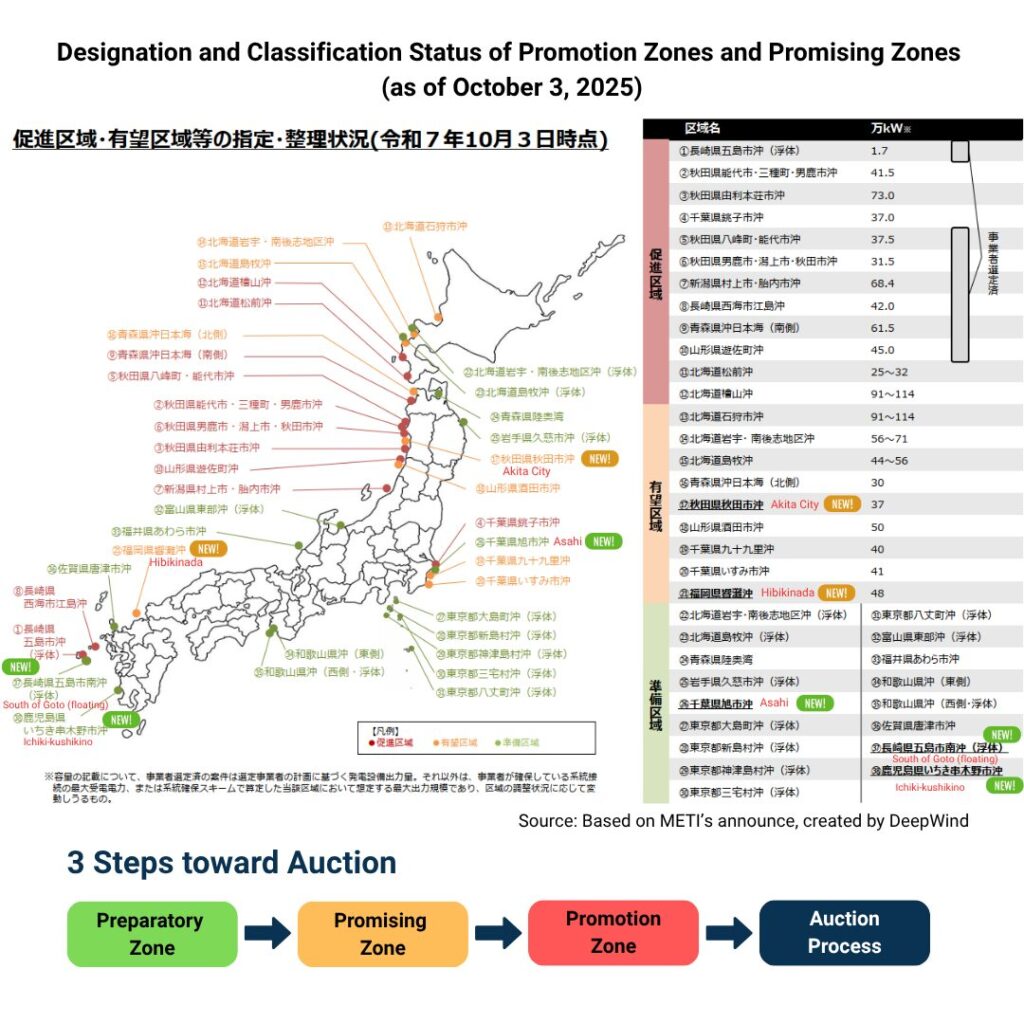
A major amendment in 2025 extended eligible areas into Japan’s Exclusive Economic Zone (EEZ), greatly expanding potential development zones.
🔗 Japan Expands Offshore Wind Zone to EEZ: New Law Ushers in Next Phase of Renewable Energy
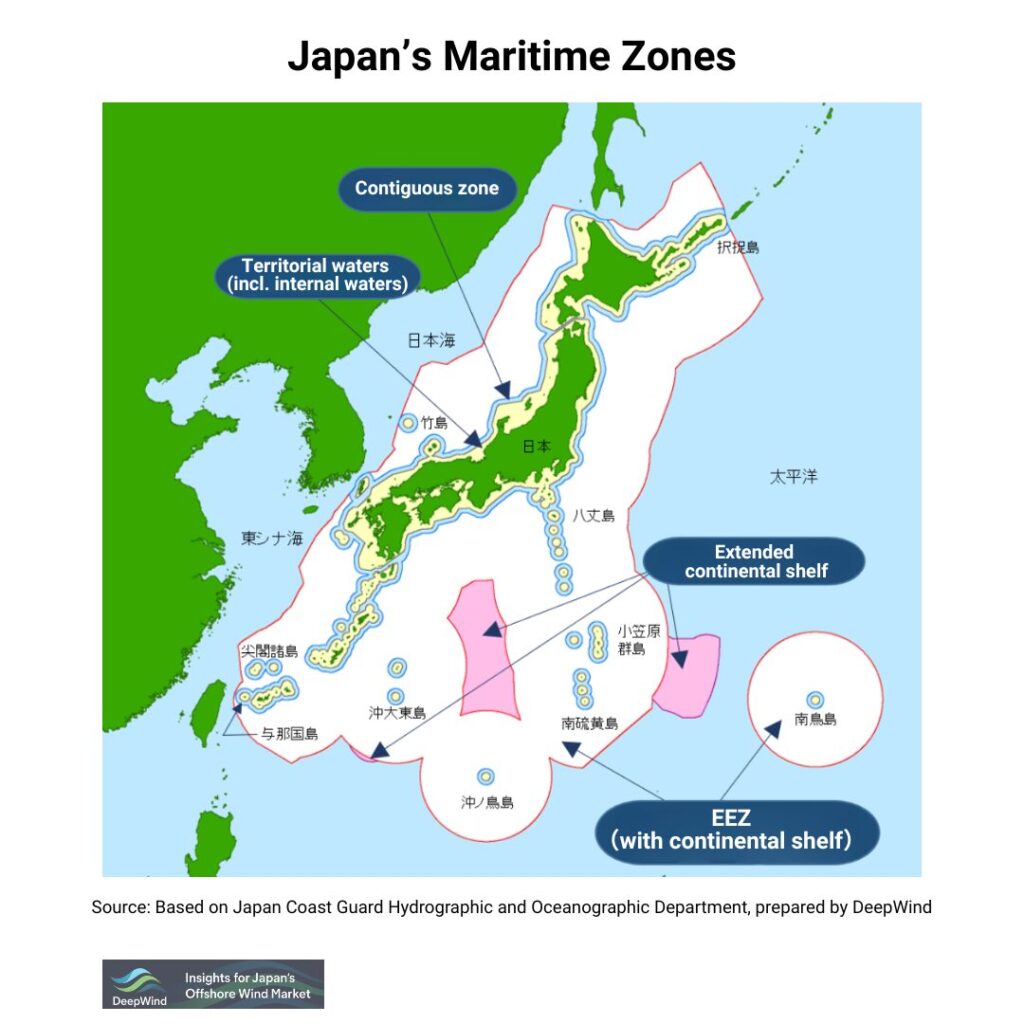
4. Project Selection: Scoring System and Bid Evaluation
Japan uses a scoring system to evaluate public tenders in designated promotion zones. Bids are assessed based on two main components: price and feasibility. The feasibility score further includes detailed criteria such as project execution capacity, financial planning, decommissioning strategies, and stakeholder engagement.
🔗 Japan Offshore Wind Project Selection Criteria: Scoring System
This article provides a detailed explanation of the key points from the official document titled “New Offshore Wind Auction System to Ensure Project Completion” published by Japan’s Agency for Natural Resources and Energy and the Ministry of Land, Infrastructure, Transport and Tourism on November 19, 2025.
🔗Japan Overhauls Offshore Wind Auction Rules to Ensure Project Completion
5. Support Mechanisms: FIT&FIP and LTDA Schemes
Japan has implemented Feed-in Tariff (FIT) and Feed-in Premium (FIP) schemes to support renewable energy deployment. While FIT ensures fixed pricing, FIP introduces market exposure with additional premiums. The shift toward FIP raises the need for more sophisticated risk management.
🔗 Understanding Japan’s FIT and FIP Schemes: Supporting the Expansion of Renewable Energy

Japan is placing increasing emphasis on the Long-Term Decarbonization Power Supply Auction (LTDA) as a central component of its energy policy. Developing decarbonized power sources requires massive capital investment—often hundreds of billions of yen—yet power market prices in Japan remain highly volatile. Under such conditions, traditional FIT and FIP schemes no longer provide sufficient revenue certainty for large-scale, capital-intensive renewable projects.
To address this challenge, the government introduced the LTDA as a new mechanism designed to guarantee recovery of fixed costs (CAPEX + fixed OPEX) over a 20-year period.
This article provides a comprehensive and up-to-date explanation based on the latest public documents.
6. Regulatory and Certification Challenges
Offshore wind projects, especially floating types, must meet strict safety and certification standards. Japan’s regulatory landscape includes construction approvals, environmental permits, and METI certification. Floating projects face additional complexity regarding structural stability and mooring system safety.
🔗 Part 4: Regulatory Framework, Certification & Challenges in Japan’s Floating Offshore Wind
7. Policy Evolution and Risk Management
While Japan’s policy framework has advanced rapidly, emerging risks remain. These include transmission bottlenecks, potential suspension of bidding rounds, and changes to financial support mechanisms. Japan’s government continues to respond by updating regulations and improving planning predictability.
🔗 Key Policy Enhancements to Secure Offshore Wind Energy Investment in Japan
In November 2025, Japan’s Ministry of Economy, Trade and Industry (METI) and the Ministry of Land, Infrastructure, Transport and Tourism (MLIT) released a major policy package titled “Measures to Ensure the Successful Completion of Offshore Wind Projects.” The document was developed in direct response to the withdrawals seen in Japan’s first offshore wind tender round. It sets out a comprehensive suite of reforms aimed at securing the successful delivery of upcoming Round 2 and Round 3 projects.
This article summarizes the key points of the government’s policy update and, more importantly, provides DeepWind’s view on what these seven measures mean for Japan’s offshore wind market from a practical, financial, and strategic perspective.
🔗 Japan’s Offshore Wind Policy Enters a New Phase: Seven Structural Reforms
Understanding how Japan’s offshore wind policy framework translates into actual project delivery requires close examination of Round 1 outcomes. Based on METI’s official withdrawal analysis, this article explores why Japan’s offshore wind Round 1 projects were abandoned, focusing on structural issues in auction design, price weighting, and feasibility assessment.
🔗 Lessons from METI’s Analysis of Japan’s Offshore Wind Round 1
Between November and December 2025, Japan introduced a series of offshore wind policy updates covering both auction reform and measures to support project execution after selection. Rather than isolated adjustments, these changes signal a shift away from pure price competition toward a stronger focus on deliverability and execution capability. This article examines auction rules and project support measures as a single, integrated policy package, and explores what this shift means for the stability and credibility of Japan’s offshore wind market.
🔗 What Has Changed in Japan’s Offshore Wind Policy? (2025)
Conclusion: What’s Next for Japan’s Offshore Wind Policy?
Japan’s offshore wind policy framework is a layered system that balances centralized control with legal clarity and financial incentives. As the country aims for large-scale deployment, the evolution of this framework will play a critical role in determining success. Stakeholders must stay informed of policy changes, regulatory updates, and market dynamics to navigate this complex landscape.
